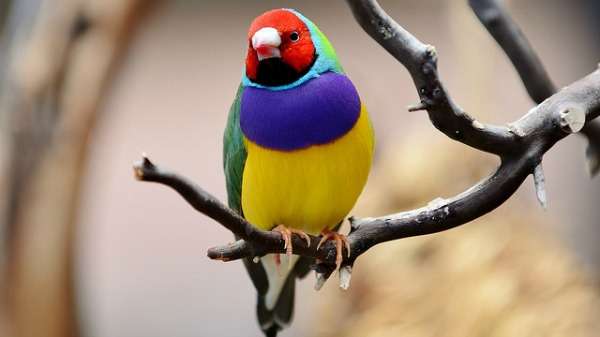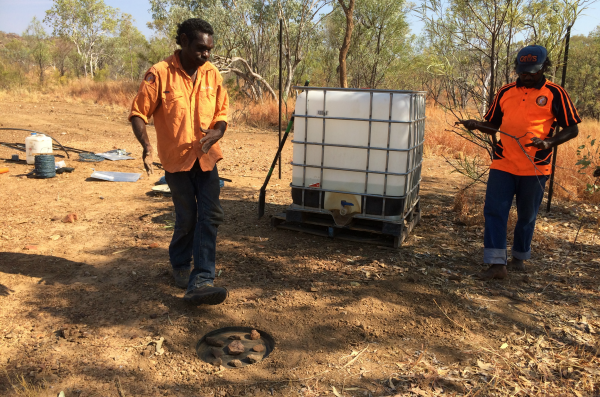Bush burning helps Gouldian finches thrive

Improved bush burning methods by Indigenous Rangers in the East Kimberley have been hailed for the resurgence of Gouldian finches (Erythrura gouldiae) in the region.
Once classified as "threatened" Gouldian finches in their Kimberley habitat have just had their status downgraded to vulnerable, and World Wildlife Fund Ecologist Andrew Watson says he suspects this is due to better bush burning methods.
Dr Watson is collaborating with the Kija Indigenous Rangers in the region to mimic traditional cultural mosaic (low intensity) burning practices while putting into practice the discoveries of researchers.
Now in its third year, rangers working the program say they have seen the striking birds every day, whereas last year they only saw them a few times at a single location.
Ecologist Dr Sarah Pryke determined that Gouldian finches thrived when they had access to spinifex seed while Dr Sarah Legge concluded the birds preferred spinifex seed from grass that was at least three years old, but which large hot fires tended to destroy.
The rangers are systematically burning the bush at Aboriginal-owned stations Doon Doon, Glenn Hill, Bow River; and Violet Valley Aboriginal reserve using helicopters.

At least one Kija Traditional Owner sits in the chopper which drops incendiaries on the ground following pre-mapped flight routes.
The rangers may follow this up with further burning on the ground using grip torches to target specific areas.
The result is a north-south string of burned firebreaks that prevents late season wildfires from spreading, and protects some of the old growth spinifex that the birds feed on.
Rangelands NRM coordinates the whole program from Broome, and project manager Kira Andrews says the rangers have now extended the program to nearby non-Indigenous run stations, who have also used their skill as firefighters.
Meanwhile, Dr Watson and the rangers have invented a device to measure Gouldian finch numbers in the form of an automatically refilling dish with water that is fenced off from large animals.
A camera records the presence of any birds every three seconds, allowing the rangers to work elsewhere for extended periods as the dishes are fed from 1,000 litre tanks.
Dr Watson says they developed the prototype last year, and Australian Geographic has funded them to make and place ten more near ten newly-identified Gouldian finch breeding sites which they have protected from fires.
Provided by Science Network WA
This article first appeared on ScienceNetwork Western Australia a science news website based at Scitech.




















